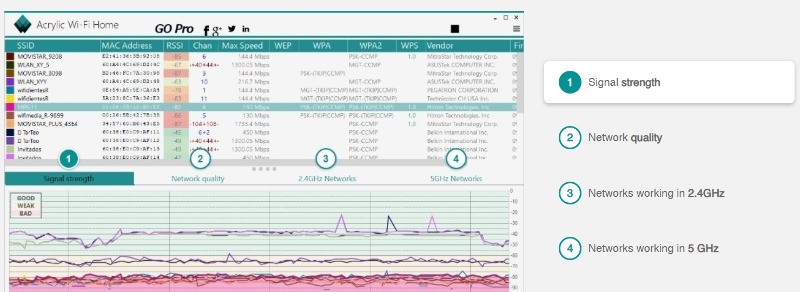

While your Wi-Fi is in monitor mode, it will be turned off and you won’t be able to access the Internet. Else, your Wi-Fi card will show up in “Managed mode” and it doesn’t support monitor mode. If the last command was successful, the Wi-Fi card should be in monitor mode. To double-check, hit the following command. In case you don’t have monitor mode on your Wi-Fi card, the command will end with an error. Since my Wi-Fi card supports monitor mode, the command completed successfully. To do that, run the following command sudo iwconfig wlp3s0 mode monitor Now that we have the interface down, we can turn the Wi-Fi card to monitor mode. Replace wlp3s0 with your Wi-Fi interface name.

Once we have the interface name, we need to turn the Wi-Fi down. Since I am connected to the internet via Wi-Fi, you can see the IP address and the state is UP.

This command will display all the network interfaces on your system. To do that, use the following command ip a Foremost, we need to find the interface name of the Wi-Fi adapter. In Ubuntu, the process is quite simple and doesn’t require installing any additional tools. In case the sniffer tool throws an error, it means your Wi-Fi doesn’t support monitor mode. This means that your Wi-Fi supports monitor mode. If you click on the Wi-Fi icon at the top-right corner, you will see that your Wi-Fi is in monitor mode. If the sniffer tool runs successfully, you will see your Wi-Fi down.
#ACRYLIC WIFI PRO WILL NOT OPEN WINDOWS#
Read: 6 Best Wireshark Alternatives for Windows and macOS Depending on your settings, you might have to enter your login Mac’s login credentials for authentication. Click on the Start button for the Sniffer tool to start scanning. As of now, we will go with the default options. On the Sniffer window pop-up, you will see Channels and Channel Width option. Alternatively, you can also do the same by clicking on the Window menu on the toolbar and click on “Sniffer”. Once you have the Wireless Diagnostics tool launched, hit ⌘ +⌥ +6 to launch the Sniffer window. To do that, run the Wireless Diagnostics tool from the Spotlight search.Īlternatively, you can click the Wi-fi icon in the toolbar while holding down the option key, and select Open Wireless Diagnostics from the drop-down menu. However, the process is a bit tedious so we will go the GUI way. macOSįor macOS, you can check for the Wi-Fi card’s monitor mode via the terminal using the tcpdump tool. Whilst, if packets are being successfully captured, it means that your Wi-Fi card supports monitor mode.Īlternatively, you can also do the same using the Wireshark network monitoring tool.ĭownload Microsoft Network Monitor 2. In case you get an error popping up, it means your Wi-Fi card doesn’t support monitor mode. Post the setup, click on the “Start” button to start capturing the packets. This is to ensure that the Wi-Fi card only listens to network traffic.

On the settings dialogue box, uncheck everything else apart from Wi-Fi and click on the Close button. To do that, click on the “Capture Settings” option on the top toolbar. On the New Capture tab, we want only the Wi-Fi card to listen to the packets. Next, launch the app and on the Start page, click on “New Capture”. Once done, you need to reboot the system for the tool to detect the network cards.
#ACRYLIC WIFI PRO WILL NOT OPEN INSTALL#
However, it is fully compatible to run on Windows 10 machine.ĭownload and install the MS Network Monitor tool. It’s an official tool developed by Microsoft but currently is in the archival state. Hence, we would need to resort to a tool called Microsoft Network Monitor. In Windows, there is no direct command to check or turn on monitor mode on your Wi-Fi Card. Check If Wireless Adapter Supports Monitor Mode 1.


 0 kommentar(er)
0 kommentar(er)
